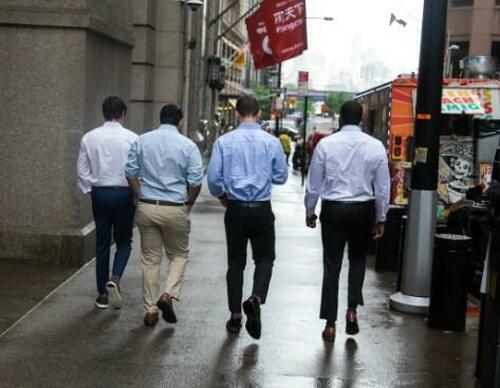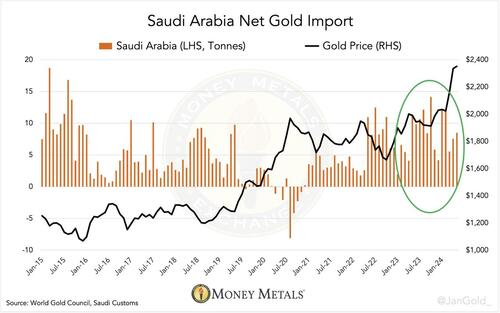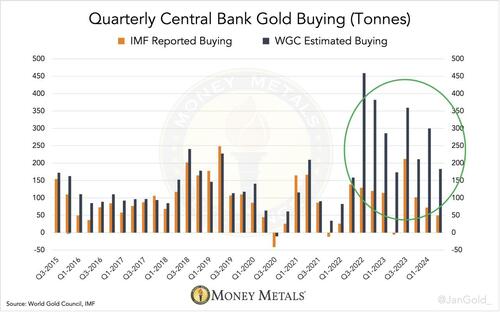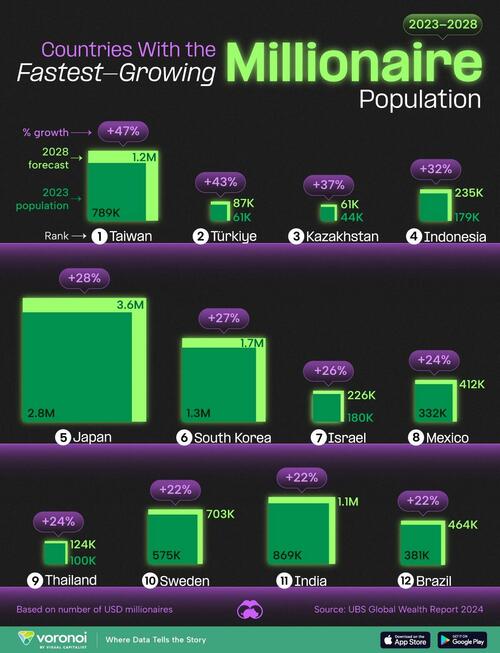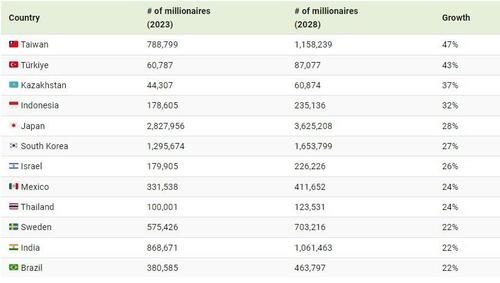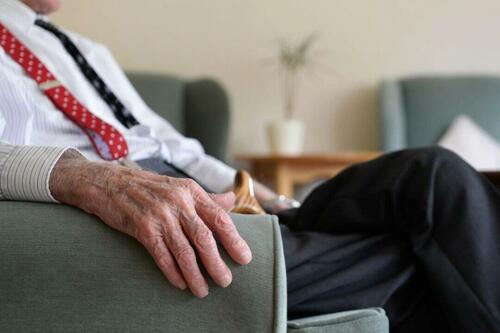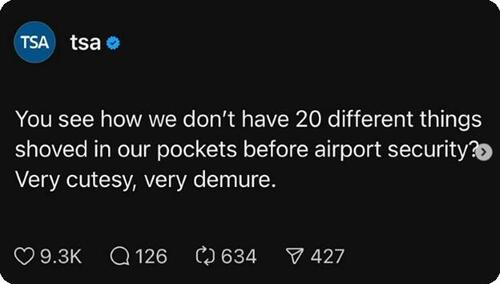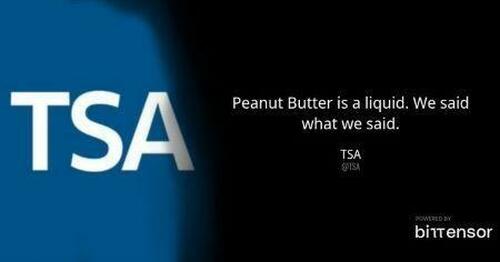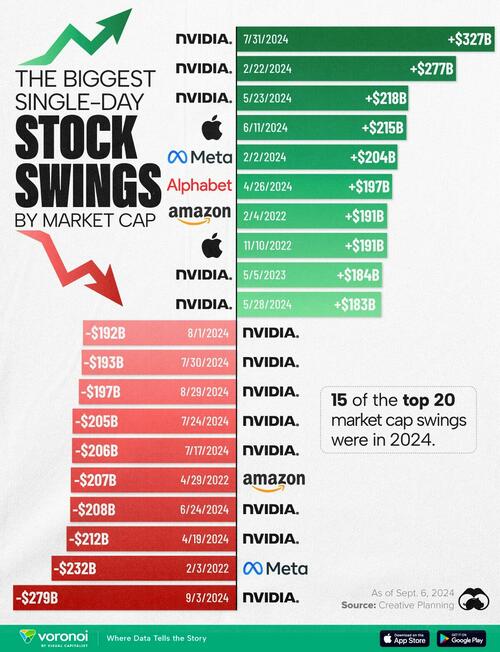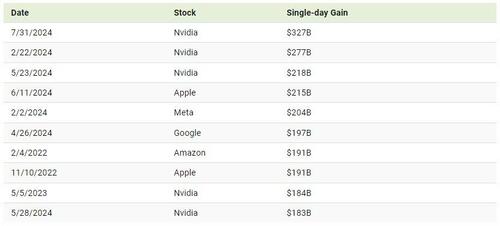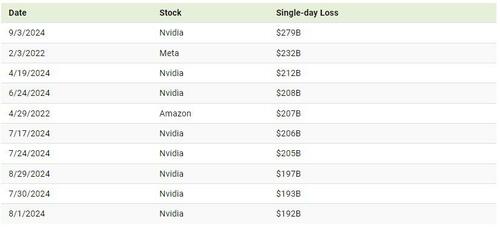In Bid For Global Dominance, Beijing Builds EV Factories In Africa
Authored by Darren Taylor via The Epoch Times (emphasis ours),
China has started to build factories across Africa to manufacture electric vehicles, a strategy market analysts say will likely flood the world with cheap EVs and allow Chinese companies to dominate the global automobile industry far into the future.
Automakers under the communist regime are already benefiting from huge subsidies, resulting in dramatic increases in production and allowing China to severely undercut prices of EVs made elsewhere, including in the United States.
One study shows Beijing has given China’s EV manufacturers at least $231 billion in state aid over 15 years, from 2009 until the end of 2023.
The automobile sector in mainland China has been the largest in the world measured by unit production since 2008, said JATO Dynamics, a global leader in automotive data, analysis, and intelligence.
Automakers from the globe’s second-biggest economy already account for more than half of the EVs produced in the world, according to the International Energy Agency (IEA).
“China wants to maintain this advantage by adding Africa to its quiver but it knows there are factors beyond its control. For example, Chinese-built EVs currently get hit by 100 percent tax when sold in America,” said Layton Beard, an analyst at South Africa’s Automobile Association.
“I’ve never seen such proactive moves in the global motor vehicle industry as I’m seeing from the Chinese; it seems like they’re up to something new every week.”
In May, U.S. President Joe Biden announced that tariffs on Chinese EVs would increase from 25 percent to 100 percent.
“With extensive subsidies and non-market practices leading to substantial risks of overcapacity, China’s exports of EVs grew by 70 percent from 2022 to 2023—jeopardizing productive investments elsewhere,” according to a statement from the White House.
“A 100 percent tariff rate on EVs will protect American manufacturers from China’s unfair trade practices.”
In July, the European Union raised duties on Chinese-made EVs to almost 50 percent, as sales figures showed cars from the East are becoming popular throughout Europe because they’re much cheaper.
Beard, like other global auto trade experts who spoke to The Epoch Times, believes that the planned Chinese EV manufacturing rollout in Africa is designed, in great part, to “offset present and future loss of profits” caused by Western trade restrictions.
He said Beijing is positioning Chinese automobile giants, including BYD, Chery, SAIC Motor Corp, and Changan Auto, for “aggressive” moves into markets previously dominated by Japanese, American, and European models.
The latest vehicle market intelligence report released by JATO Dynamics said China’s ascension in 2023 to replace Japan as the world’s biggest auto exporter “proved it can mount a credible vehicle export effort in the face of trade barriers.”
The report added that while Chinese EVs aren’t very prevalent on European or American roads, “they are increasingly on the radar.”
Surveying the opinions of thousands of Americans and Europeans in 2023, JATO concluded that more than half of respondents “are aware of at least one Chinese brand, including BYD, Leap Motor, and Nio.
Across the board, respondents say that they would consider a Chinese EV if priced 20 percent lower than a similar non-Chinese model.”
JATO said that last year, for the first time, China’s carmakers outsold their U.S. counterparts, “a testament to the shifting power dynamics in the global auto market.”
The analysis said Chinese brands led by BYD sold 13.4 million new vehicles last year, beating the 11.9 million units delivered by American brands such as Ford and Chevrolet.
JATO added that Chinese manufacturers’ market share “soared” across the Middle East, Eurasia, and Africa, with the likes of SAIC and Geely also “making inroads in more mature markets” such as Europe and Australia.
China’s customs bureau said the country exported 5.22 million automobiles in 2023—a 57 percent year-on-year rise—of which one in three was fully electric.
In its analysis of the international auto market in 2024, Virta Global, a multinational company providing renewable battery charging solutions, said demand for electric vehicles is driven by efforts to decarbonize.
“EVs are to play a central role in the ambitious objective of zero-emission targets set for 2050. The market is growing. It’s growing fast. And it’s growing everywhere,” said Virta.
According to the IEA, worldwide EV sales reached almost 14 million in 2023, 35 percent up on 2022, with the global electric car fleet rising to 40 million last year.
The agency said the upward trend in global EV sales is continuing in 2024, growing by 25 percent in the first quarter of the year compared to the same period in 2023.
Virta predicts at least 17 million sales by the end of 2024.
“Electric cars could account for 20 percent of total car sales by then,” its report said.
At the recent Forum on China-Africa Cooperation (FOCAC) summit in Beijing, CCP leader Xi Jinping promised to pump almost $51 billion into African economies over the next three years.
“Chinese officials told us a big chunk of this money will be used to construct electric vehicle manufacturing plants for the big Chinese carmakers, providing thousands of jobs to Africans and also making our roads full of clean energy vehicles,” said Joseph Kahama, a member of a Tanzanian business delegation that attended FOCAC.
Norman Lamprecht, chief trade and research officer at the Johannesburg-based Automotive Business Council, said no country is coming “remotely close to what the Chinese are doing in terms of sheer numbers and they’re also being far more daring in terms of EV production than any other country.
“America is still fixated on making and driving cars driven by fossil fuels, and to a smaller degree hybrid vehicles,” Lamprecht told The Epoch Times.
“The Japanese giants, Toyota and Nissan, have also been much more cautious than their Chinese counterparts on EVs, putting production efforts into hybrid models.”
He said these factors have caused the Japanese and Americans to lose ground in the global EV sector.
“But we have to acknowledge that the Chinese get a lot of help from their government that others don’t get and that cushion allows the Chinese to take risks,” Lamprecht said.
JATO Dynamics analyst, Felipe Munoz, told The Epoch Times that consistently high car prices among the the world’s legacy automakers, driven by “a certain measure of negligence,” has “inadvertently driven consumers toward more affordable Chinese alternatives,” especially in the EV segment.
Research completed by Shiv Shivaraman, vehicle market analyst for global financial advisory firm, AlixPartners, shows EVs currently sell in China for an average of $34,400, considerably lower than the $55,242 average selling price in the United States.
And Chinese EVs are getting cheaper—earlier this year BYD released its Seagull hatchback with a price tag of just $9,698.
“Many factors drive the disparity between prices of Chinese-made EVs and those made elsewhere,” Shivaraman told The Epoch Times.
“Chinese automakers have a significant cost advantage due to much lower labor rates, increased scale, healthy government subsidies, and more favorable battery costs, as many of the world’s EV batteries or components are sourced from China.”
Beard said China will maintain, and “probably even boost,” the advantages it enjoys domestically in EV production when its automakers “set up shop” in Africa.
“You can bet the Chinese government is working out very favorable terms for investing and doing business in Africa with its African counterparts, who Beijing has been doing business with for decades,” he said.
“Labor costs are also going to be low in Africa.”
Lamprecht believes the main reason Chinese carmakers are preparing to “sweep into Africa” is their desire to manufacture at the source of many of the minerals and metals essential to EVs and batteries.
The Chinese Communist Party (CCP) is closely allied with political elites in most of Africa’s top producers of rare-earth or critical minerals and metals such as cobalt, copper, lithium, and manganese.
Professor Lauren Johnston, of the China Studies Centre at the University of Sydney, told The Epoch Times that Beijing’s proposed investments in EV factories in Africa could be an “extension of its strategy” to control the means of production of renewable energy technologies, from wind turbines to solar panels to electric vehicle batteries.
Johnston said Chinese mining presence in Africa is concentrated in five countries: Guinea, Zambia, South Africa, Zimbabwe, and the Democratic Republic of Congo (DRC).
“Among them, the DRC, Zambia, and Zimbabwe are the crucible of the new green energy race in Africa. They’re home to Africa’s copper belt and have the biggest reserves of lithium, copper, and cobalt,” she said.
More than 70 percent of the world’s cobalt is produced in the DRC, and China owns 72 percent of the DRC’s cobalt and copper mines.
According to the Center for Strategic and International Studies in Washington, China currently produces 60 percent of the world’s rare-earth minerals but processes nearly 90 percent, which means that it’s importing precious minerals and metals from other countries, mainly Africa, for processing.
“This has given China a near monopoly,” said the think-tank.
Chinese mining companies are also well established in Zimbabwe, where Prospect Lithium Zimbabwe, a subsidiary of Zhejiang Huayou Cobalt, opened a $300 million lithium processing plant in 2023.
Johnston said it would “make sense” for China’s biggest EV investments to be in Africa’s most developed and “technologically sound” economies, with good logistics.
“That leaves your usual suspects as probable hosts for Chinese car manufacturers, countries like South Africa, Morocco, Egypt, Kenya, and Nigeria; maybe also Ghana and Tunisia,” she said.
Beard said automakers SAIC and BYD have already started selling limited numbers of EVs in several African markets, including South Africa, Tunisia, Rwanda, and Morocco.
Parks Tau, South Africa’s Minister of Trade and Industry, told The Epoch Times that BYD has expressed “strong interest to work and invest” in Africa’s top vehicle manufacturer and exporter.
“We have vast experience in car production and we also mine vast amounts of lithium and manganese that are indispensable to EV battery production,” he said.
In Kenya, Chinese EV maker, Chery, has partnered with a local company to invest $20 million in the country’s EV sector.
Chery is building an assembly plant in Nairobi to manufacture 6,000 EVs annually, promising to create 3,000 jobs.
In Morocco, China is funding what it said will be the biggest renewable energy battery factory in the Southern Hemisphere.
China’s steel-making giant, Chinalco, is among the companies set to develop the world’s largest untapped high-grade iron ore deposit, in Guinea.
Iron ore is used to produce steel, which plays a crucial part in the renewable energy sector in several ways, including in wind turbines and in mounting structures for solar panels.
Beard said China is already preparing for a world “saturated” with EVs by putting policies in place to dominate global sales of used cars.
In 2019, Beijing began rescinding a policy forbidding exports of used vehicles of any kind. Since that year, the government has granted 27 cities and provinces the right to export second-hand cars.
In 2022, according to China’s Ministry of Commerce, the country exported almost 70,000 used vehicles, a significant increase on 2021, when fewer than 20,000 were exported.
In 2023, the ministry released a draft policy on second-hand car export that, once approved, will allow the export of used automobiles from all regions of China.
Africa has the largest used vehicle market in the world, according to market research firm Mordor Intelligence.
Tyler Durden
Sun, 09/15/2024 – 08:10
via ZeroHedge News https://ift.tt/7FvYuto Tyler Durden






